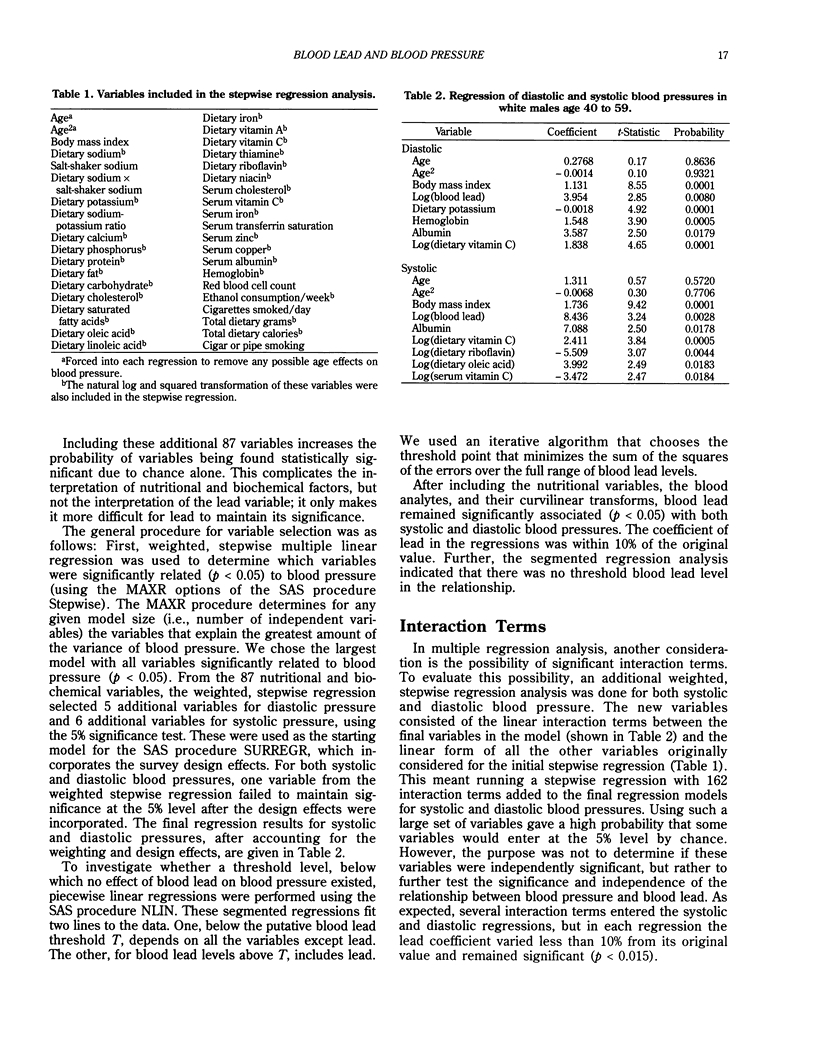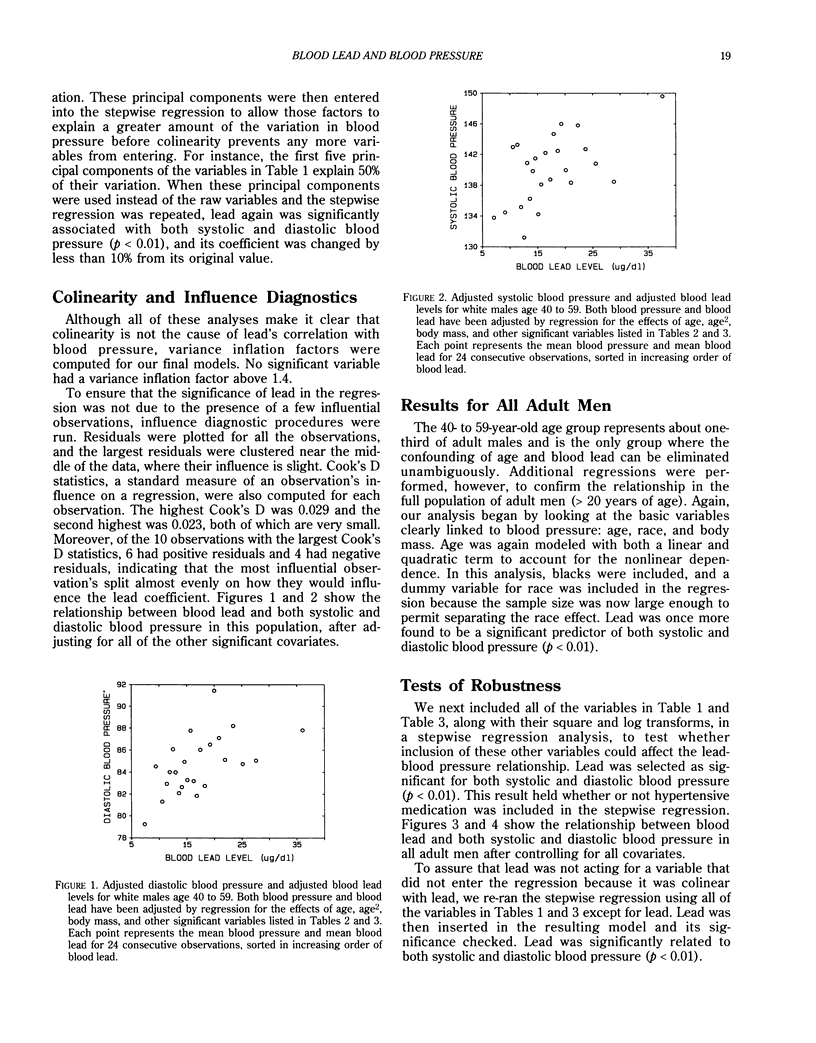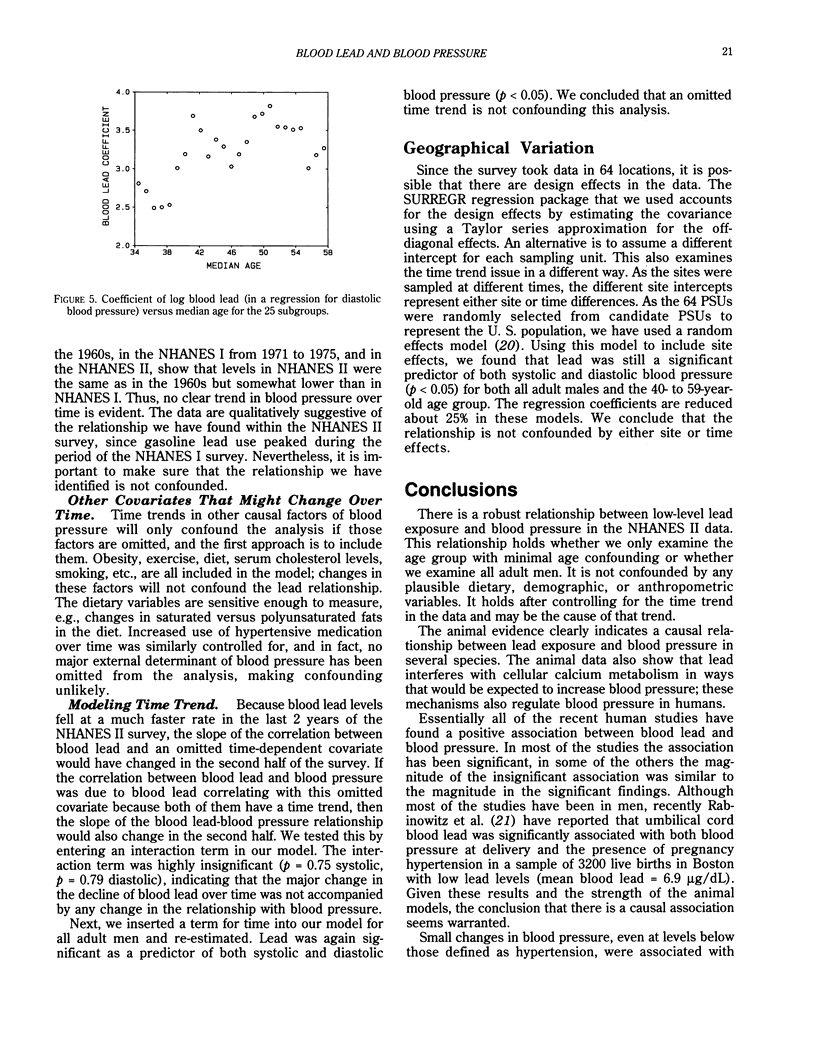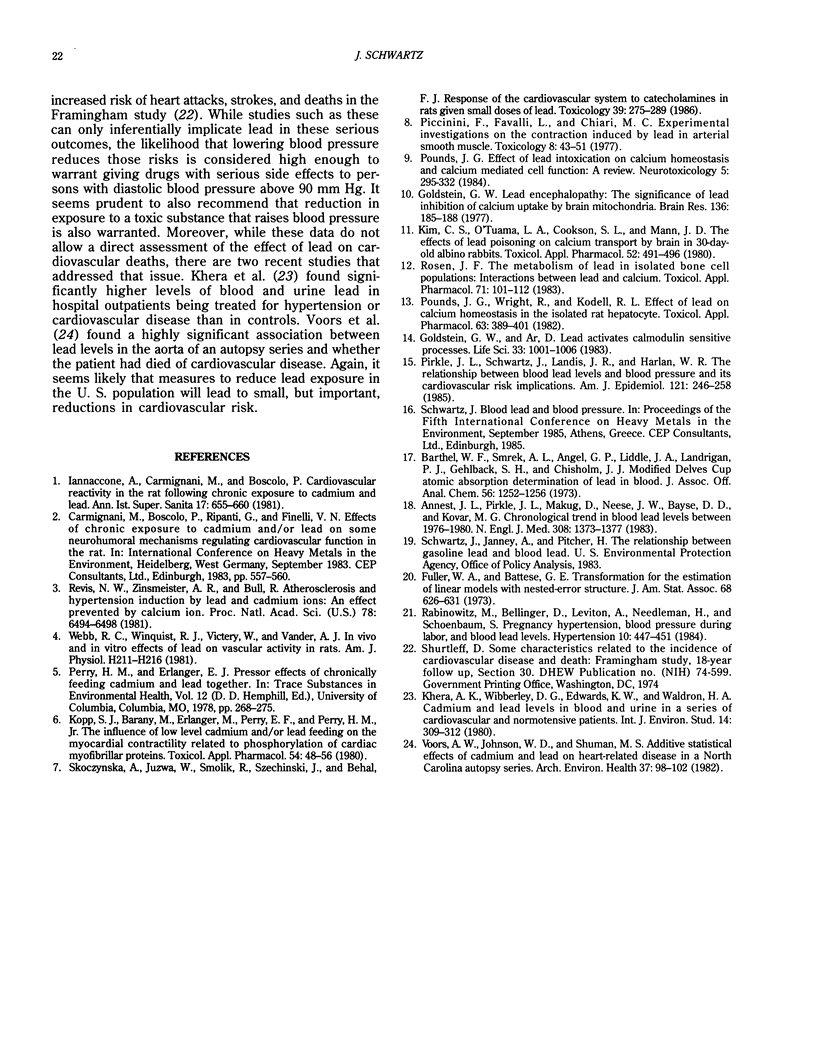Abstract
A large body of experimental data has shown that lead raises blood pressure and increases responsiveness to alpha-adrenergic agonists in rats and pigeons. These studies suggest the need to look for a similar relationship in humans. This paper examines the robustness of the previously reported association between blood lead and blood pressure in adult males. The association remains strong and is essentially unchanged in tests that include nutritional factors and demographic factors, alone or together, or in tests that include insignificant terms. The relationship was not confounded by age; it held for all adult men in the 20-45 age group, the 40-59 age group, and the 46-74 age group. Interaction terms for 25 30-year age groups (20-49, 21-50,. . . , 45-74) were all insignificant, indicating no difference in the relationship by age. The relationship is also robust to the inclusion of a time trend to account possible omitted time-varying factors, and it held in a model that controlled for possible site effects. Given the strong experimental evidence, the relationship is likely causal.
Full text
PDF







Selected References
These references are in PubMed. This may not be the complete list of references from this article.
- Annest J. L., Pirkle J. L., Makuc D., Neese J. W., Bayse D. D., Kovar M. G. Chronological trend in blood lead levels between 1976 and 1980. N Engl J Med. 1983 Jun 9;308(23):1373–1377. doi: 10.1056/NEJM198306093082301. [DOI] [PubMed] [Google Scholar]
- Goldstein G. W., Ar D. Lead activates calmodulin sensitive processes. Life Sci. 1983 Sep 5;33(10):1001–1006. doi: 10.1016/0024-3205(83)90757-9. [DOI] [PubMed] [Google Scholar]
- Goldstein G. W. Lead encephalopathy: the significance of lead inhibition of calcium uptake by brain mitochondria. Brain Res. 1977 Nov 4;136(1):185–188. doi: 10.1016/0006-8993(77)90145-7. [DOI] [PubMed] [Google Scholar]
- Kim C. S., O'Tuama L. A., Cookson S. L., Mann J. D. The effects of lead poisoning on calcium transport by brain in 30-day-old albino rabbits. Toxicol Appl Pharmacol. 1980 Mar 15;52(3):491–496. doi: 10.1016/0041-008x(80)90343-9. [DOI] [PubMed] [Google Scholar]
- Kopp S. J., Bárány M., Erlanger M., Perry E. F., Perry H. M., Jr The influence of chronic low-level cadmium and/or lead feeding on myocardial contractility related to phosphorylation of cardiac myofibrillar proteins. Toxicol Appl Pharmacol. 1980 Jun 15;54(1):48–56. doi: 10.1016/0041-008x(80)90007-1. [DOI] [PubMed] [Google Scholar]
- Piccinini F., Favalli L., Chiari M. C. Experimental investigations on the contraction induced by lead in arterial smooth muscle. Toxicology. 1977 Aug;8(1):43–51. doi: 10.1016/0300-483x(77)90022-1. [DOI] [PubMed] [Google Scholar]
- Pirkle J. L., Schwartz J., Landis J. R., Harlan W. R. The relationship between blood lead levels and blood pressure and its cardiovascular risk implications. Am J Epidemiol. 1985 Feb;121(2):246–258. doi: 10.1093/oxfordjournals.aje.a113995. [DOI] [PubMed] [Google Scholar]
- Pounds J. G. Effect of lead intoxication on calcium homeostasis and calcium-mediated cell function: a review. Neurotoxicology. 1984 Fall;5(3):295–331. [PubMed] [Google Scholar]
- Pounds J. G., Wright R., Morrison D., Casciano D. A. Effect of lead on calcium homeostasis in the isolated rat hepatocyte. Toxicol Appl Pharmacol. 1982 May;63(3):389–401. doi: 10.1016/0041-008x(82)90268-x. [DOI] [PubMed] [Google Scholar]
- Revis N. W., Zinsmeister A. R., Bull R. Atherosclerosis and hypertension induction by lead and cadmium ions: an effect prevented by calcium ion. Proc Natl Acad Sci U S A. 1981 Oct;78(10):6494–6498. doi: 10.1073/pnas.78.10.6494. [DOI] [PMC free article] [PubMed] [Google Scholar]
- Rosen J. F. The metabolism of lead in isolated bone cell populations: interactions between lead and calcium. Toxicol Appl Pharmacol. 1983 Oct;71(1):101–112. doi: 10.1016/0041-008x(83)90049-2. [DOI] [PubMed] [Google Scholar]
- Skoczyńska A., Juzwa W., Smolik R., Szechiński J., Behal F. J. Response of the cardiovascular system to catecholamines in rats given small doses of lead. Toxicology. 1986 Jun;39(3):275–289. doi: 10.1016/0300-483x(86)90028-4. [DOI] [PubMed] [Google Scholar]
- Voors A. W., Shuman M. S., Johnson W. D. Additive statistical effects of cadmium and lead on heart-related disease in a North Carolina autopsy series. Arch Environ Health. 1982 Mar-Apr;37(2):98–102. doi: 10.1080/00039896.1982.10667544. [DOI] [PubMed] [Google Scholar]


